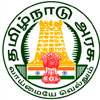Institute of Printing Technology
The origin of the Institute of Printing Technology goes back to the year 1926. A Printing Technology Section was started in the Madras Trades School, a Government Institution conducting certificate courses in a few industrial trades. With the opening of the printing section, a part-time certificate course of four year duration in Printing Technology was introduced. This was the first ever organised and approved training course in Printing Technology in India. In the year 1931, the Trades School became the Government School of Technology and in 1938, the four year certificate course was upgraded to a full fledged Diploma course of five years duration. This was the first Diploma course in Printing Technology in India.
In the year 1931, the Trades School became the Government School of Technology and in 1938, the four year certificate course was upgraded to a full fledged Diploma course of five years duration. This was the first Diploma course in Printing Technology in India.
In the year 1946, the Government School of Technology was renamed as Central Polytechnic, and a full-time Diploma course in Printing Technology of three year duration was introduced in addition to the five-year part-time course. .
In the year 1955, the Printing Section of the Central Polytechnic was separated and an independent Regional School of Printing for the Southern Region was started in 1958. Late Thiru V. K. Sriramulu, then the Head of Section, was appointed as its first Principal.
During 1960–61, the full-time Diploma course in Printing Technology was restructured as Letterpress and Lithography, with new syllabi and curriculum to update the knowledge of the students in the Printing industry.
In June 1968, the Institution was shifted from Broadway to its present famous premises in the Central Institute of Technology Campus at Adyar. In January 1975, the name of the Institution was changed to “Institute of Printing Technology” .
In June 1975, the full-time and part-time Diploma courses were restructured as Semester pattern, and the entire syllabi, curriculum and examination schemes were revised to fulfil the modern needs of the industry. In the beginning of the 1976-77 session, the full-time Diploma course of six semesters was converted into sandwich pattern of seven semesters. .
In 1977, the Institute completed fifty years of activities earning the respect and regard of the industry and entered its 51st year and the Golden Jubilee was celebrated on Thursday, the 29th March 1979. .
In 1987, the present pattern of education was restructured again as integrated course of three years to meet the modern day requirements of the industry on the recommendation of “The All India Federation of Master Printers”, New Delhi. .
In 1999–2000, Government of Tamil Nadu introduced New Syllabi common for all First Year Diploma Courses conducted by the Department of Technical Education. Our first year students are also expected to undergo the same syllabi as the first year engineering students of other branches to help them join the Engineering Degree Course particularly Degree in Printing Technology conducted by the Anna University. .
The Institution’s Platinum Jubilee Year was celebrated on 17th March 2002.
‘K’ Scheme syllabus was introduced in 2007.
‘L’ Scheme syllabus was introduced in June 2011. The ‘L’ Scheme gave importance to the latest technology with due consideration for digital prepress systems that demands more diploma holders in India and abroad. This Syllabus gave importance to quality print production at the same time helping to introduce the new printing machine mechanics.
‘M’ Scheme syllabus was introduced in 2015.
The First Year of I and II Semester is ‘N’ Scheme syllabus is being followed from July 2020.
Our Vision
To be a well recognized centre of excellence for Entrepreneurship Development based Quality learning and Skill Development.
Our Mission
To foster students to inculcate entrepreneurial thinking, promote and facilitate business knowledge. To inspire and empower students to take initiatives and accept responsibilities and to develop the aspiring entrepreneurs into ethical and dynamic business leaders by making them employment creators than seekers.

